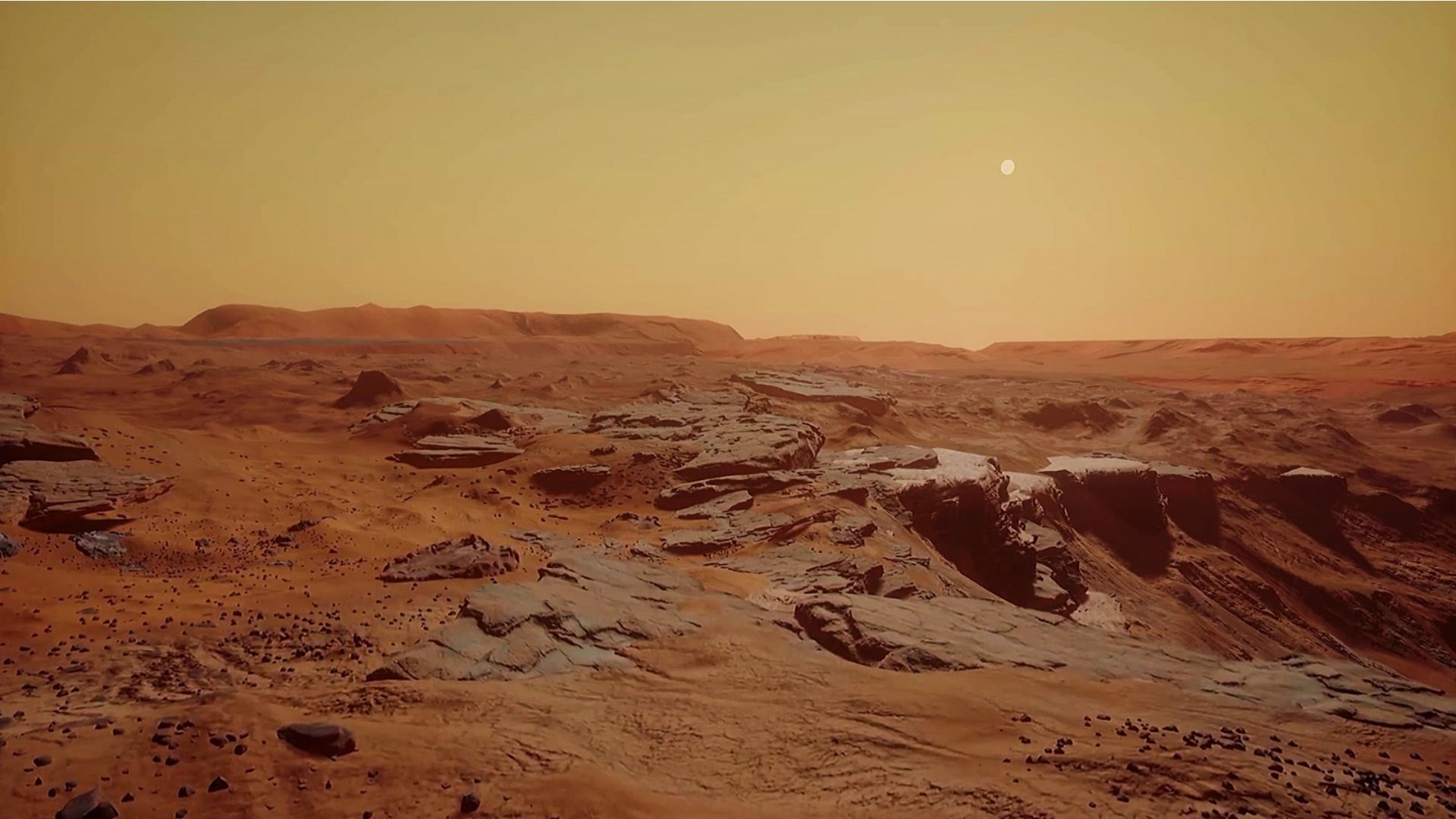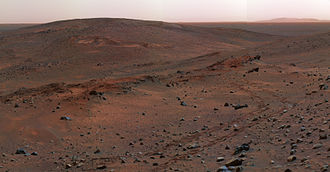Mars

General Info
Located at a varying distance no closer than 33 million miles from the earth, Mars is the fourth planet from the Sun and the second-smallest planet in the Solar System after Mercury. In English Mars carries a name of the Roman god of war, and is often referred to as the "Red Planet" because the reddish iron oxide prevalent on its surface gives it a reddish appearance that is distinctive among the astronomical bodies visible to the naked eye. Mars is a terrestrial planet with a thin atmosphere, having surface features reminiscent both of the impact craters of the Moon and the valleys, deserts, and polar ice caps of Earth. Mars can easily be seen from Earth with the naked eye, as can its reddish coloring.
Source: Wikipedia

Environment
Of all the planets in the Solar System, the seasons of Mars are the most Earth-like, due to the similar tilts of the two planets' rotational axes. The lengths of the Martian seasons are about twice those of Earth's because Mars's greater distance from the Sun leads to the Martian year being about two Earth years long. Martian surface temperatures vary from lows of about −143 °C (−225 °F) at the winter polar caps to highs of up to 35 °C (95 °F) in equatorial summer. The wide range in temperatures is due to the thin atmosphere which cannot store much solar heat, the low atmospheric pressure, and the low thermal inertia of Martian soil. The planet is 1.52 times as far from the Sun as Earth, resulting in just 43% of the amount of sunlight.
Source: Wikipedia

Position
Mars's average distance from the Sun is roughly 230 million kilometres (143,000,000 mi), and its orbital period is 687 (Earth) days. The solar day (or sol) on Mars is only slightly longer than an Earth day: 24 hours, 39 minutes, and 35.244 seconds. A Martian year is equal to 1.8809 Earth years, or 1 year, 320 days, and 18.2 hours. The axial tilt of Mars is 25.19 degrees relative to its orbital plane, which is similar to the axial tilt of Earth. As a result, Mars has seasons like Earth, though on Mars, they are nearly twice as long because its orbital period is that much longer. In the present day epoch, the orientation of the north pole of Mars is close to the star Deneb. Mars passed an aphelion in March 2010 and its perihelion in March 2011. The next aphelion came in February 2012 and the next perihelion came in January 2013.
Source: Wikipedia

Mars Rover
There have been four successful robotically operated Mars rovers. The Jet Propulsion Laboratory managed the Mars Pathfinder mission and its now inactive Sojourner rover. It currently manages the Mars Exploration Rover mission's active Opportunity rover and inactive Spirit, and, as part of the Mars Science Laboratory mission, the Curiosity rover. On January 24, 2016 NASA reported that current studies on the planet Mars by the Curiosity and Opportunity rovers will now be searching for evidence of ancient life, including a biosphere based on autotrophic, chemotrophic, and/or chemolithoautotrophic microorganisms, as well as ancient water, including fluvio-lacustrine environments (plains related to ancient rivers or lakes) that may have been habitable.The search for evidence of habitability, taphonomy (related to fossils), and organic carbon on the planet Mars is now a primary NASA objective.
Source: Wikipedia